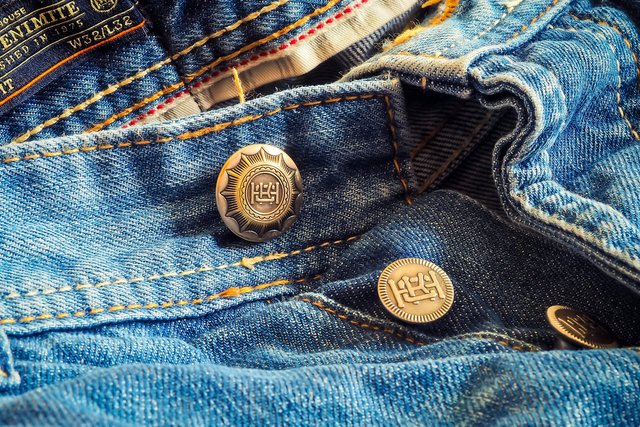I will agree and disagree with many of the comments. Being a former manufacturer, I understand the cost of production from materials to labor. Jeans are one of my specialties. Would you believe that Armani jeans are worse made than cheap Levi's jeans. The production of jeans for Armani was contracted from factories using conventional machines versus being produced in-house with multi-million dollar automated machines. Cheaper jeans are better engineered than more expensive jeans. The way Armani got away with it was by using a more expensive cotton thread whose fibers are more durable and softer after washing. This gives the illusion that it is of the best quality and avoids the fact that the back pocket is stitched crookedly and the seams are undone. I can't say the fit is better unless you have a model build.
People commented how much they loved $100 Armani T-shirts. I cringe because I know they paid the contractor $1.50 to sew it. I was at the Gildan factory in Honduras making cotton shirts for $3.50 a dozen so I really knew what those shirts were about. Again the choice of knit material allows the brand to sell at outrageous prices. It's the labels that make shoppers feel confident, I can get the same quality at Zara for 25% off because sourcing the fabric isn't magic.
I read Louboutin's comment and smiled. Shoes are another of my specialties. Every designer uses shoe finishes, i.e. wooden shapes to shape the shoes. Not all feet are the same, so don't expect one shoe to fit all if you have long feet, or arches, problems. The quality is second to none when you consider the screening of the quality of the leather, the selection of finds found inside the shoe, the die cutting procedure, the stitching on the automatic post machine, and the machines for bonding the soles without making a mark. a brilliant red lacquered sole creates a cobblestone masterpiece.
I read the couture comments, I agree… very good stitching. I'm in a couture shop, the amount of hand sewing and manual work is a throwback to the Marie Antoinette era. Unfortunately for those who can afford it, wearing it only once, is not seen wearing it twice.
So let's talk about real designer designs, not overpriced jeans and t-shirts. If we're talking flagship labels and not cheaper sportswear lines, we're talking now. For true designer clothing, the fabric is knitted or woven in smaller batches so the production costs are higher. It also does not fade after continuous use. It's not uncommon to spend $200/m on fabric versus what you see in a sportswear line for $14/m. When a woman spends $3,000 on a skirt suit, you're betting that the quality rivals a Saville Row style suit without being made to size. The blend isn't cheap $1.25/m Pellon, instead relying on real horsehair canvas. The lining is made of beautiful silk and not polyester and is hand sewn onto the judge's coat, not sewn on. The buttonholes are made by hand and not made with Reece's keyhole machine.
For sweaters, designer sweaters cost over $200, which is reflected in day-to-day prices. Sweaters are made on automatic knitting equipment controlled by PC software using low-cost yarn. Designer labels like Fendi or Missoni that cost thousands are made in smaller batches using luxury yarns to die for, embellished with exotic materials like silk, fur etc and sweaters will last a lifetime to willingly pass down to the next generation.

Greetings your post has been supported by our official community account @hive-126193. To get more information about our community, visit our community introduction post click here. To get further knowledge join our Official discord channel of Steem fashion & style link here
Subscribe and Join our community
Downvoting a post can decrease pending rewards and make it less visible. Common reasons:
Submit